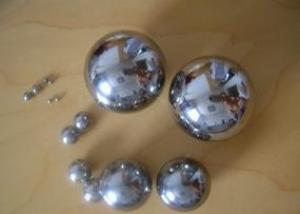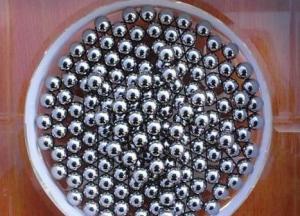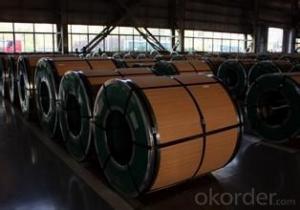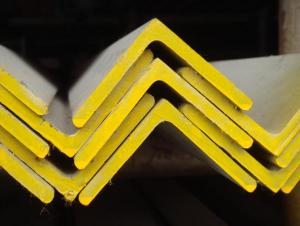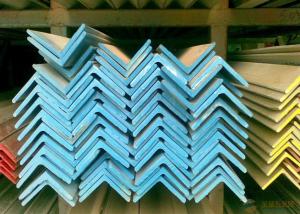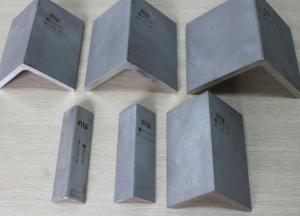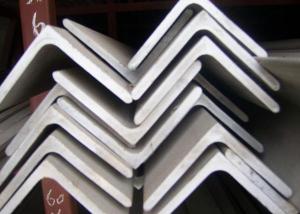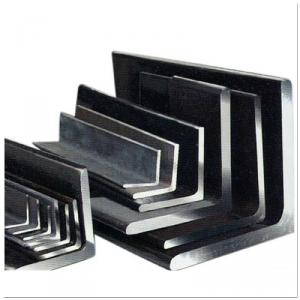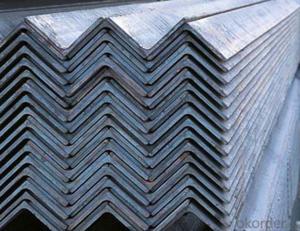GALVANIZED STEEL ENGLE BAR EQUAL STEEL BAR UNEQUAL STEEL BAR JIS GB
- Loading Port:
- Tianjin
- Payment Terms:
- TT OR LC
- Min Order Qty:
- 100 m.t.
- Supply Capability:
- 4000 m.t./month
OKorder Service Pledge
OKorder Financial Service
You Might Also Like
Product Description:
Specifications of Galvanized Angle Steel
Galvanized Angle Steel Zinc Thickness: 15--80μ
Hot Galvanized Angle Steel ss400
Sizes: 25*25~250*250mm
Grades: SS400,SS540,A36
1. Invoicing on theoretical weight or actual weight as customer request
2. Length: 6m
3. Sizes:
HOT DIPPED GALVANIZED EQUAL ANGLES SIZES |
| ||
a(mm) | a1(mm) | thickness(mm) | length |
25 | 25 | 2.5---3.0 | 6M |
30 | 30 | 2.5---4.0 | 6M |
38 | 38 | 2.5 | 6M |
38 | 38 | 3.0---5.0 | 6M |
40 | 40 | 3.0---6.0 | 6M |
50 | 50 | 3 | 6M |
50 | 50 | 3.7---6.0 | 6M |
60 | 60 | 5.0---6.0 | 6M |
63 | 63 | 6.0---8.0 | 6M |
65 | 65 | 5.0---8.0 | 6M |
70 | 70 | 6.0---7.0 | 6M |
75 | 75 | 5.0---10.0 | 6M |
80 | 80 | 6.0---10.0 | 6M |
90 | 90 | 6.0---10.0 | 6M |
100 | 100 | 6.0---12.0 | 6M |
120 | 120 | 8.0-12.0 | 6M |
125 | 125 | 8.0---12.0 | 6M |
130 | 130 | 9.0-12.0 | 6M |
140 | 140 | 10.0-16.0 | 6M |
150 | 150 | 10---15 | 6M |
160 | 160 | 10---16 | 6M |
180 | 180 | 12---18 | 6M |
200 | 200 | 14---20 | 6M |
5. PROCESS: HOT-DIP GALVANIZATION of Galvanized Angle Steel
Hot-dip galvanization is a form of galvanization. It is the process of coating iron, steel or aluminium with a layer of zinc by immersing the metal in a bath of molten zinc at a temperature of around 860 °F (460 °C). When exposed to the atmosphere, the pure zinc (Zn) reacts with oxygen (O2) to form zinc oxide (ZnO), which further reacts with carbon dioxide (CO2) to form zinc carbonate (ZnCO3), a usually dull grey, fairly strong material that stops further corrosion in many circumstances, protecting the steel below from the elements. Galvanized steel is widely used in applications where corrosion resistance is needed, and can be identified by the crystallization patterning on the surface (often called a "spangle").
Usage & Applications of Galvanized Angle Steel
Galvanized steel can be welded; however, one must exercise caution around the resulting zinc fumes. Galvanized steel is suitable for high-temperature applications of up to 392 °F (200 °C). The use of galvanized steel at temperatures above this will result in peeling of the zinc at the inter metallic layer. Electrogalvanized sheet steel is often used in automotive manufacturing to enhance the corrosion performance of exterior body panels; this is, however, a completely different process which tends to achieve lower coating thicknesses of zinc.
Like all other corrosion protection systems, galvanizing protects steel by acting as a barrier between steel and the atmosphere. However, zinc is a more electronegative metal in comparison to steel, this is a unique characteristic for galvanizing which means that when a galvanized coating is damaged and steel is exposed to the atmosphere, zinc can continue to protect steel (often within an annulus of 5 mm above which electron transfer rate decreases)..
Packaging & Delivery of Galvanized Angle Steel
1. Packing: it is nude packed in bundles by steel wire rod
2. Bundle weight: not more than 3.5MT for bulk vessel; less than 3 MT for container load
3. Marks:
Color marking: There will be color marking on both end of the bundle for the cargo delivered by bulk vessel. That makes it easily to distinguish at the destination port.
Tag mark: there will be tag mark tied up on the bundles. The information usually including supplier logo and name, product name, made in
If loading by container the marking is not needed, but we will prepare it as customer request.
4. Transportation: the goods are delivered by truck from mill to loading port, the maximum quantity can be loaded is around 40MTs by each truck. If the order quantity cannot reach the full truck loaded, the transportation cost per ton will be little higher than full load.
5. Delivered by container or bulk vessel
- Q:Are stainless steel angles suitable for outdoor railing systems?
- Indeed, outdoor railing systems can indeed make use of stainless steel angles. Renowned for its robustness and resistance to corrosion, stainless steel stands as a superb option for outdoor purposes. By offering structural support and stability to railing systems, stainless steel angles guarantee their safety and endurance. Furthermore, stainless steel's elegant and contemporary aesthetics effortlessly harmonize with diverse architectural styles, rendering it a highly favored selection for outdoor railing systems.
- Q:Are stainless steel angles resistant to phosphoric acid?
- Yes, stainless steel angles are generally resistant to phosphoric acid due to their high corrosion resistance properties.
- Q:How do stainless steel angles compare to other types of angles?
- Stainless steel angles are highly regarded for their superior strength, durability, and corrosion resistance, making them a preferred choice in various industries. When comparing stainless steel angles to other types of angles, such as aluminum or carbon steel angles, several key differences become apparent. One significant advantage of stainless steel angles is their exceptional resistance to corrosion. This property makes stainless steel angles ideal for applications that involve exposure to moisture, chemicals, or other corrosive elements. Unlike aluminum angles, which may corrode or develop oxidation over time, stainless steel angles maintain their integrity and appearance even in demanding environments. Furthermore, stainless steel angles exhibit remarkable strength and durability. Compared to aluminum angles, stainless steel angles have a higher tensile strength, allowing them to withstand heavier loads and more rigorous conditions. This strength also translates into excellent structural stability, making stainless steel angles a reliable choice for construction and engineering projects. In terms of aesthetics, stainless steel angles offer a sleek and modern appearance. They can be easily polished or brushed to achieve a desired finish, adding an attractive and professional touch to architectural designs or interior applications. Conversely, aluminum angles may have a less refined appearance and are often used in applications where weight reduction is a priority. Although stainless steel angles tend to be more expensive than aluminum angles, they provide a longer service life and reduced maintenance costs due to their corrosion-resistant properties. Additionally, stainless steel angles are recyclable, making them an environmentally friendly choice. In summary, stainless steel angles surpass other types of angles in terms of corrosion resistance, strength, durability, and aesthetic appeal. While aluminum angles may be lighter and more cost-effective, stainless steel angles offer unmatched performance and reliability, making them the preferred choice for a wide range of applications.
- Q:What is the bending radius for stainless steel angles?
- The bending radius for stainless steel angles can vary depending on the specific grade and thickness of the material. However, in general, stainless steel angles have a relatively small bending radius due to their high strength and rigidity. It is advisable to consult with a manufacturer or engineer to determine the specific bending radius for a particular stainless steel angle.
- Q:Can stainless steel angles be used in the production of transportation equipment?
- Yes, stainless steel angles can be used in the production of transportation equipment. Stainless steel is a versatile material that offers excellent corrosion resistance, strength, and durability. These properties make it suitable for various applications in the transportation industry, including the production of vehicles such as cars, trucks, trains, and ships. Stainless steel angles can be used in the construction of structures and frames, providing support and stability to transportation equipment. They can be welded, bent, and formed into different shapes and sizes, making them adaptable to specific design requirements. In addition, stainless steel's resistance to rust and corrosion ensures that transportation equipment remains safe and reliable even in harsh environments or exposure to moisture. Furthermore, stainless steel angles can also be utilized in the fabrication of components such as brackets, supports, and fittings. These components play crucial roles in the assembly and functionality of transportation equipment, ensuring proper alignment, attachment, and reinforcement. Overall, stainless steel angles offer numerous advantages for the production of transportation equipment, including their strength, corrosion resistance, and versatility. As a result, they are commonly used in various applications within the transportation industry.
- Q:Are stainless steel angles resistant to chloride stress corrosion cracking?
- Yes, stainless steel angles are resistant to chloride stress corrosion cracking. This is because stainless steel contains a high amount of chromium, which forms a protective oxide layer on the surface of the material. This oxide layer acts as a barrier, preventing the penetration of chloride ions and other corrosive substances. Additionally, stainless steel angles are often alloyed with elements such as molybdenum and nickel, which further enhance their resistance to stress corrosion cracking in chloride environments. However, it is important to note that the specific grade and composition of stainless steel will determine its level of resistance to chloride stress corrosion cracking, and certain conditions such as high temperatures and high concentrations of chloride can still potentially lead to corrosion. Therefore, it is crucial to select the appropriate grade of stainless steel for the specific application and environment to ensure maximum resistance to chloride stress corrosion cracking.
- Q:What are the different types of stainless steel angles profiles?
- There are several different types of stainless steel angle profiles, including equal angles, unequal angles, and L-shaped angles. Each type has specific dimensions and angles, making them suitable for various applications in construction, architecture, and other industries.
- Q:What are the fatigue resistance properties of stainless steel angles?
- Stainless steel angles have excellent fatigue resistance properties. Due to their high strength and durability, stainless steel angles can withstand repetitive loading and cyclic stress without experiencing significant fatigue failure. This is primarily attributed to the unique composition of stainless steel, which includes a high percentage of chromium, nickel, and other alloying elements that enhance its corrosion resistance and mechanical properties. Additionally, stainless steel angles are often heat-treated, further improving their fatigue resistance. These properties make stainless steel angles a preferred choice in applications where cyclic loading and fatigue are major concerns, such as structural components in buildings, bridges, and machinery.
- Q:How do you secure stainless steel angles?
- One way to secure stainless steel angles is by using appropriate fasteners such as stainless steel screws, bolts, or brackets. These fasteners should be chosen based on the size and weight of the angle and should also be made of stainless steel to ensure compatibility and prevent corrosion. Additionally, using adhesive or welding techniques can also be effective in securing stainless steel angles depending on the specific application and load requirements.
- Q:How do you determine the torsional strength of a stainless steel angle?
- To determine the torsional strength of a stainless steel angle, several factors need to be considered. Firstly, it is important to understand that torsional strength refers to the ability of a material to resist twisting or rotational forces. In the case of a stainless steel angle, torsional strength is a measure of its resistance to deformation or failure when subjected to torsional loads. One way to determine the torsional strength is by conducting a torsion test. This test involves applying a twisting force to the stainless steel angle until it reaches its maximum torsional strength or failure point. The test is typically performed using a torsion testing machine that applies a controlled torque to the angle. During the torsion test, various parameters are measured, including the angle of twist, torque, and torsional stress. These parameters can be used to calculate the torsional strength of the stainless steel angle. The torsional strength is usually expressed in terms of torque per unit length or torque per unit area. It is worth noting that the torsional strength of a stainless steel angle can depend on several factors, such as the alloy composition, heat treatment, and manufacturing process. Therefore, it is essential to ensure that the test specimens are representative of the actual angle being used in the application. In addition to torsion testing, other methods such as finite element analysis (FEA) can also be employed to determine the torsional strength of a stainless steel angle. FEA uses computer modeling and simulation techniques to analyze the behavior of the angle under torsional loads. This approach allows for a more detailed understanding of the angle's torsional strength and can help optimize its design for specific applications. In conclusion, determining the torsional strength of a stainless steel angle involves conducting torsion tests or utilizing computational methods such as FEA. These methods provide valuable information about the angle's resistance to twisting forces and help ensure its suitability for various engineering applications.
1. Manufacturer Overview |
|
|---|---|
| Location | |
| Year Established | |
| Annual Output Value | |
| Main Markets | |
| Company Certifications | |
2. Manufacturer Certificates |
|
|---|---|
| a) Certification Name | |
| Range | |
| Reference | |
| Validity Period | |
3. Manufacturer Capability |
|
|---|---|
| a)Trade Capacity | |
| Nearest Port | |
| Export Percentage | |
| No.of Employees in Trade Department | |
| Language Spoken: | |
| b)Factory Information | |
| Factory Size: | |
| No. of Production Lines | |
| Contract Manufacturing | |
| Product Price Range | |
Send your message to us
GALVANIZED STEEL ENGLE BAR EQUAL STEEL BAR UNEQUAL STEEL BAR JIS GB
- Loading Port:
- Tianjin
- Payment Terms:
- TT OR LC
- Min Order Qty:
- 100 m.t.
- Supply Capability:
- 4000 m.t./month
OKorder Service Pledge
OKorder Financial Service
Similar products
New products
Hot products
Related keywords








